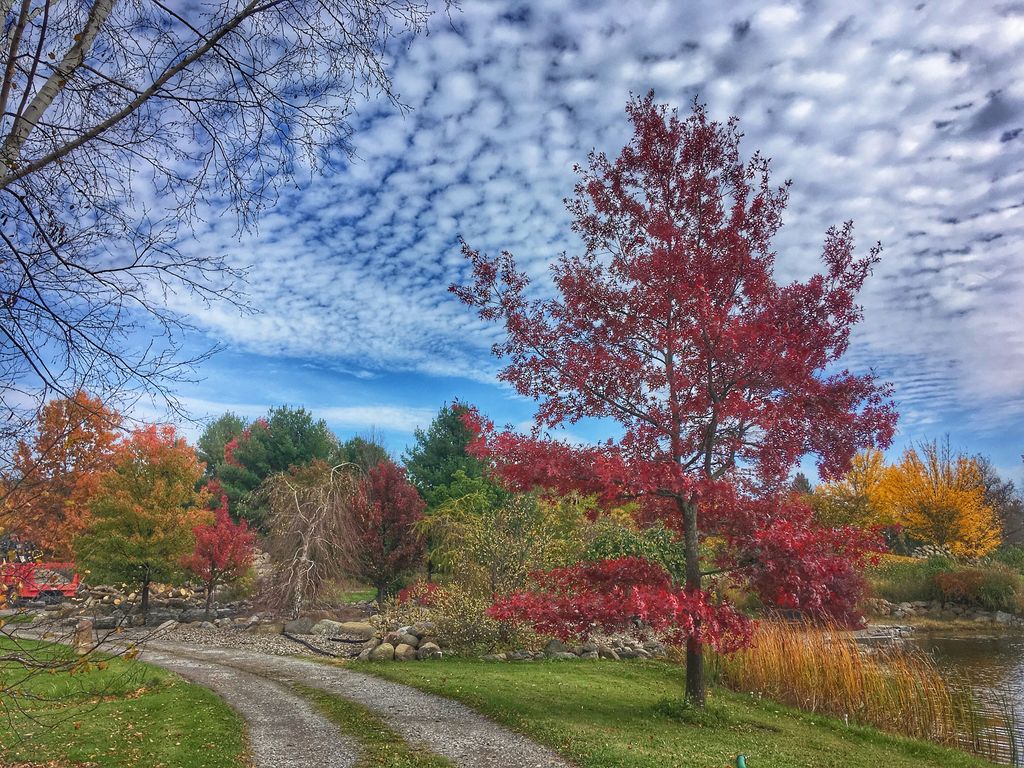
Ah, autumn. If I am forced to choose one of the four seasons in which to live in perpetuity, the season of sweater weather would be it. While at times the ending of gardening season can be bittersweet, the majestic crescendo with which it ends more than makes up for it in my book. And by fall, we’re all ready to rest a bit, aren’t we?
But first—fall foliage! I have always lived in areas rich with a variety of deciduous trees that shed their leaves as they enter winter slumber, and I feel the garden—and gardener—do much the same. Big bright blooms are everywhere in the early fall garden, and I am there to soak up every last one, while also taking this great opportunity to plant a few choice woodies and perennials, in addition to savoring the last harvests of my vegetable patch. But after the abundant harvest season comes a season of rest, for both the garden and the trees. We shed the daily tasks of gardening, and the trees . . . they shed their leaves.
Some of my favorite memories are tied to fall foliage, from raking leaves into jumping piles with my grandmother to my annual leaf collection walk tradition. I now live on a farm, and leaf raking is a thing of the past. My leaf collecting walk tradition, though, is very much alive, now accompanied by my daughters and most likely a goat or two.
I try to take a leaf collection walk multiple times in the fall, as different trees lose their leaves at different points of the season. As I walk, I make a bouquet of as many different shapes and colors as I can find. Sometimes I pick up an acorn or any seed pods I see. When I get back home, I spread them all out and try to identify the trees from my leaf collection. I’ll often take tree bark pictures near where I picked up a leaf to help with the identification process.
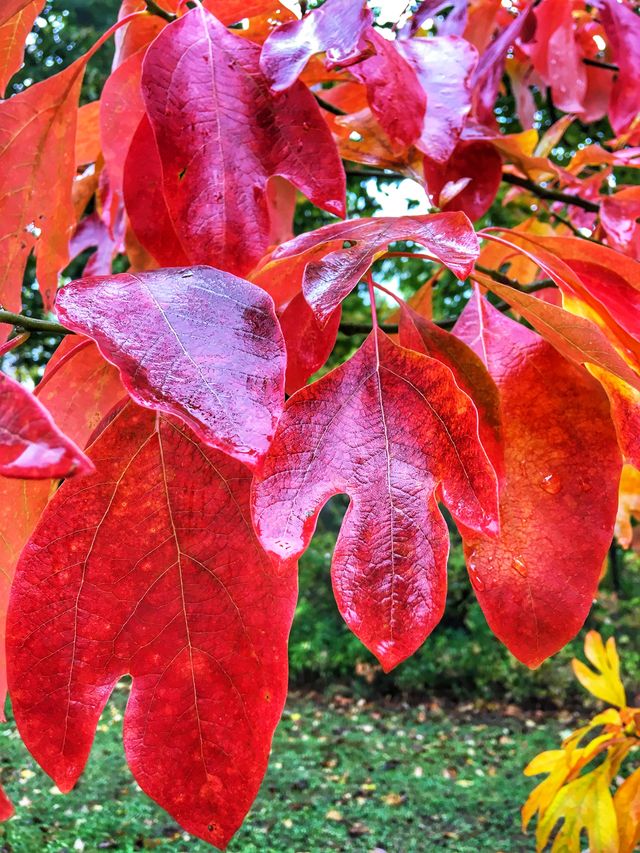
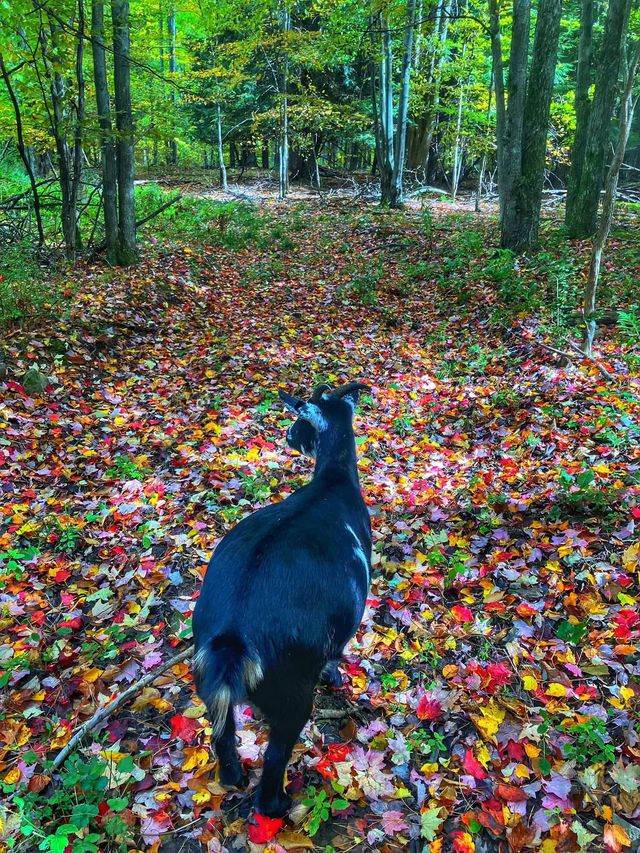
Every fall leaf is a thing of beauty, but there are some foliage treasures that get me really excited on my leaf collecting walks. The first leaf that comes to mind is unique: sassafras (Sassafras albidum), a native understory tree. Sassafras trees have three different shaped leaves—a simple, unlobed oval, a mitten-shaped leaf with one lobe, and a three-lobed leaf. If you crush a sassafras leaf, it has a sweet, citrusy-vanilla scent to it. The fall color profile of the sassafras is a bold mixture of orange, red, and a burgundy purple, with yellows mixed in as well.
While it seems most leaf peepers ooh and ahh the most over the bright oranges and reds, I am a lover of the bright yellows that ribbon through the colorful woods. Trees like aspen, ash, elm, ginkgo, and some maple species come to mind. My favorite fall yellow display, however, would have to go to the larches (Larix spp.). Larch trees are deciduous conifers, so you might not notice them much in the growing season if you are unfamiliar with them. But come autumn, their stately arches of branches are covered in tiny yellow needles, giving the towering pyramids a golden glow.
My third favorite leaves are from the oaks (Quercus spp.). Oak leaves are some of the last of the season to fall, and while there is quite a variety of oaks, their distinctive lobes are some of the easiest to spot and tend to be shades of brown with some reddish–burgundy in some species. But what makes oak leaves special to me is their texture—they are quite stiff and crispy and create the best crunch when you walk through a pile of them.
When I was deployed overseas, my mother sent me a box of autumn leaves as part of a care package. When I opened the box, the smell was unmistakable autumn, and the leaves had turned crisp, although I’m certain my mom had selected them as freshly fallen specimens. I remember at first wanting to carefully lay out each one, and make a garland, but then, giving in to the childhood memories they invoked, I thrust the box upward and let the leaves fly above me, and then fall around me on the bed and floor. It was my own personal falling leaves party in the desert, a memory I will always treasure. New York is rich when it comes to fall foliage, whether it be in one of the many parks, or a wooded lot in our own neighborhood. I’d like to share my personal top favorite places to enjoy the autumn leaf displays.
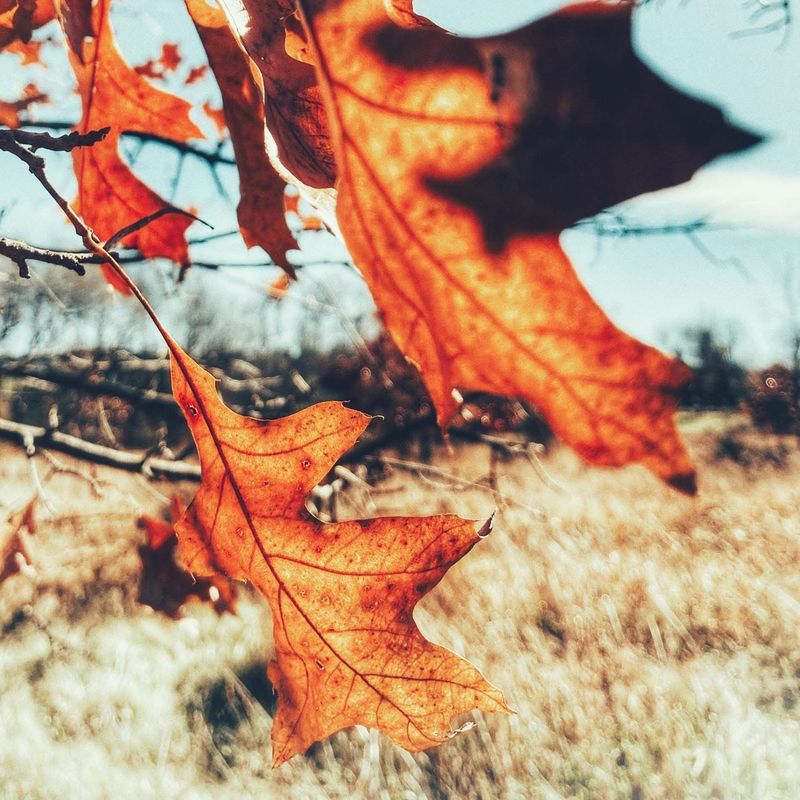
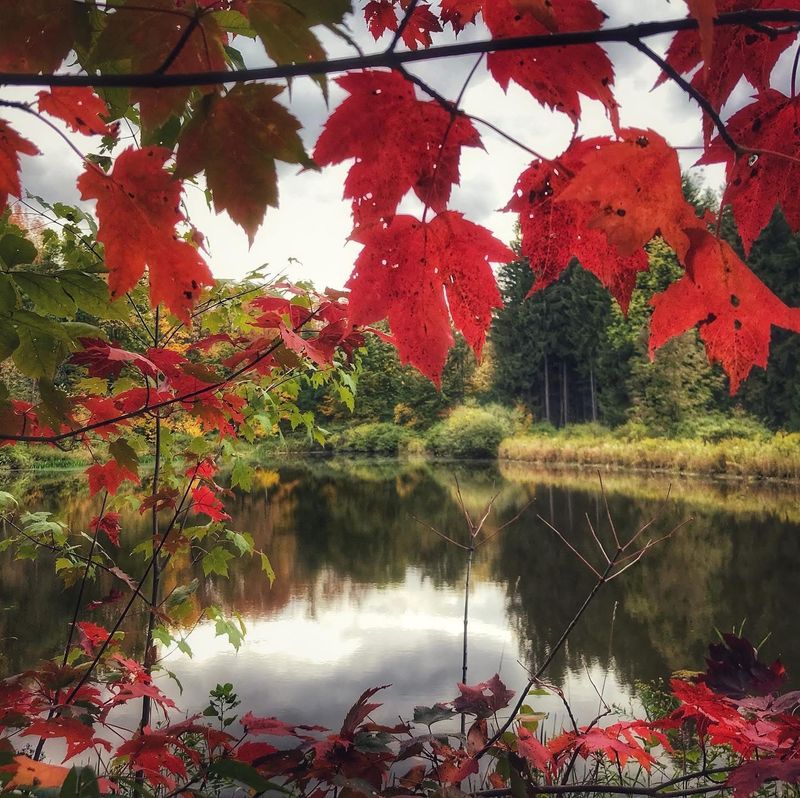
1. Draves Arboretum, Darien, NY
Top-notch for variety, this regional treasure boasts more than 900 trees and shrubs from all over the world. While you might find it hard to decide when “peak” is here, there will undoubtedly be a sizable collection of color throughout the autumn season. Though it is hard to pick a favorite section, the views in the Sanctuary Section are a symphony of texture and autumn color.
2. Boyce Hill State Forest, Franklinville, NY
If you are looking for a quiet, secluded place to wander among the falling leaves, this state forest, which is also a part of the Finger Lakes Trail, has it all. A large pond on the edge of the woods makes for beautiful reflections of the maple leaves against stands of evergreens. You can turn your leaf hunt into an overnight trip in a lean-to, which is first-come-first-serve, or at a primitive camp site by the pond.
3. Fort Niagara and Four Mile Creek State Parks, Youngstown, NY
I put these two together because they are connected by Lake Ontario. Four Mile Creek is, as aptly named, four miles from the mouth of the Niagara, where the fort sits. The oaks in the Fort Niagara State Park are old and majestic. You can take an easy stroll or bike ride down Scott Avenue, a road not open to vehicular traffic that runs along the river. Not only are there great views of the fall foliage along the river banks, the park itself has generous oak stands, sprinkled with a quality variety of more recently planted tree species. I include Four Mile Creek for a single trail near the outlet that contains a decent wild stand of my above mentioned favorite, sassafras. Be sure to find one of each of the leaf shapes: the oval, the three-lobed, and the mitten leaf!
Bonnie Warriner is a horticulturist and budding flower farmer with a love for capturing beauty in pictures and words. You can find her among the wildflowers and goats on her family’s 150 acre farm in Jasper, New York.
This article originally appeared in the September/October 2025 issue of Upstate Gardeners’ Journal.
Views: 14






